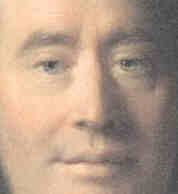1894 Charles-Émile Jacque, French Barbizon
School painter born on 23 May 1813. — LINKS
— 102
prints at FAMSF
1873 José Antonio Páez, primer
presidente de Venezuela.
1870 Domingo Goicuria, fusilado en
La Habana. Este patriota cubano había sido hecho prisionero
por las autoridades españolas cuando desembarcaba clandestinamente al frente
de un pelotón de hombres armados.
1840 Caspar-David Friedrich,
German artist born on 05 September 1774. — MORE
ON FRIEDRICH AT ART “4” MAY
— LINKS
— Chalk
Cliffs on Rugen — Cloister
Cemetery in the Snow — Large
Enclosure — Riesengebirge
— The Sea
of Ice — Wanderer
Above the Sea of Fog — Woman
in front of the Setting Sun — The
Stages of Life — Schlafender
Knabe — Tetschen
Altarpiece or The Cross in the Mountains — The
Cross in the Mountains — Abbey
with Oak Trees — Abbey
in the Oakwood — Winter
Landscape with Church
1826 (1828?) Jean-Jacques-François
Le Barbier, French Neoclassical painter born on 11 November
1738. — LINKS
1825 Antonio Salieri, Italian composer, in Vienna.
1817: 22 misioneros, degollados; se encontraban a cargo
de las Misiones del Caroní (Venezuela)
1800 Nicola Puccini,
compositor italiano.
1795
(18 floréal an III) BLANC Gabriel, négociant, domicilié
à Paris, département de la Seine, est condamné à mort comme distributeur
de faux assignats par le tribunal criminel de la Seine
1794
(18 floréal an II) Condamnés à mort par la Révolution:
^top^
Comme émigrés, par le
tribunal militaire du 1er arrondissement de l'armée des Pyrénées-Occidantales.
MARÉCHAL Nicolas Antoine, domicilié à Chatel-sur-Moselle
(Vosges). — SOULE Jean, domicilié à Départ (Basses
Pyrénées).
A Arras:
BERNARD Charles, 44 ans, né à St Pol, époux de Caron
Victoire, commis du district de St Pol
BERTHE François Marie, 32 ans, né et demeurant à
St Pol, cordonnier, époux de Laghim Marie Anne
CHEVALIER Jacques, 36 ans, né à St Pol, garde de
bois, époux de Harduin Marie Joseph
DEBRE Dominique, 65 ans, né à Canettemont, demeurant
à St Pol, receveur de consignation
DESRUELLE Théodore, 60 ans, né et demeurant à St
Pol, maçon, époux de Molin Jacqueline
DETAPE Jean Marie, 56 ans, né à St Pol, époux de
Berthe Marie Anne Joseph
MASSIAS Pierre François Raphaël, 49 ans, né à St
Pol, époux de Bourdon Marguerite Florentine
MORAND Dominique, 54 ans, né à St Pol, célibataire,
fabricant de bas
PETIT Jacques Philippe Joseph, 50 ans, né à Monchy
Breton, cultivateur
PETIT André, 40 ans, né à St Pol, potier, demeurant
à Monchy Breton
RIGAUD ou BIGAND Marie Guislaine, 56 ans, née à St
Pol, épouse de Vaillant Antoine
THELLIER Henri, 38 ans, né à St Pol, rentier, époux
de Acquier Françoise, condamé à mort à Arras
THELLIER Hubert François Joseph, 47 ans, né à St
Pol, ci-devant argentier, célibataire
THELLIER Louise Bernardine Joseph, 42 ans, née à
St Pol, épouse de De Corbehem Eloi, ex lieutenant général de la sénéchaussée
de St Pol
TURQUET Marie Anne, 65 ans, né à St Pol, demeurant
à Frévent
WAILLE Charles, concierge du disctrict de St Pol
... (guillotinés):
AGNON Louis Joseph, 59 ans, né à St Pol, charcutier,
époux de Willemand Augustine
ANSART Eugéne François, 50 ans, notaire, né à Aubigny,
demeurant à St Pol, époux de Bacqueville Reine
BACQUEVILLE Antoine Joseph, 63 ans, né à St Pol,
époux de Ansart Claudine
COFFIN Jean Noël, 58 ans, né à St Pol, époux de Delattre
Anne Claire, apothicaire
CORNE Amboise, 28 ans, né à St Pol
DUFOUR Jean Baptiste, 22 ans, né à St Pol, chasseur au 2°
régiment
DUTATE François, 29 ans, né à St Pol, écrivain, époux de
Waille Catherine
HERMAN Emmanuel, 64 ans, né à St Pol, célibataire,
homme de loi, receveur du côté de Brias, maire de St Pol au début
de la révolution
HOURIEZ ou MOURIEE Honoré, 54 ans célibataire
LAMBERT Armand, 33 ans, né à St Pol, époux de Genel
Scholastique
Comme faux dénonciateurs de patriotes,
par la commission militaire séante à Nantes:
BONNOT Jean, capitaine, de la 6ème compagnie du 7ème
bataillon du Jura, domicilié à Beaufort, canton de Lons-le-Saulnier
(Jura).
DEVAUX Joseph, capitaine de la 7ème compagnie du
1er bataillon du Jura, domicilié à Chau-du-Colombier (Jura Inférieur).
DAVID François, lieutenant de la 1ère compagnie du
7ème Bataillon du Jura, domicilié à Nauseray (Jura). [aussi:
DAVID François, lieutenant de la 4ème compagnie du 7ème bataillon
du Jura, domicilié à Nantes (Loire Inférieure), par la commission
militaire de Saumur.]
Comme conspirateurs, par le tribunal
révolutionnaire de Paris:
GUILLAUMOT Jean François, 27 ans, né à Clamecy, ci-devant
clerc de procureur, juge de paix à Cosne (Nièvre).
GUINTRAN Joseph Hyacinthe, matelassier, 34 ans; né
et domicilié à Vaicin (Vaucluse).
LAMBERT Jean Baptiste Benjamin, 23 ans, surnommer
au bureau de l'enregistrement de Dieppe, y demeurant (Seine Inférieure).
PETITJEAN François, commissaire ordonnateur de l'armée
du Nord, 47 ans, né et domicilié à Toul (Meurthe), comme complice
d'une conspiration dont Dumourier
était le chef, et par suite d'avoir laissé l'armée du Nord sans subsistances,
ainsi que les places de Cambray, Douai, Bouchain et Lille.
... domicilié
à Cosne (Nièvre), comme complices d’une conspiration dans la commune
de Cosne:
REMEAU Jean François, 57 ans natif de Neuvy-le-Républicain,
assesseur du juge de paix, ex député à l’assemblée législative.
RAMEAU Jean Louis, 62 ans, natif de Neuvy-le-Républicain,
ex seigneur.
... domiciliés
dans le département de la Drôme, comme complices d’une conspiration
qui a eu lieu au mois d’août 1792, dans la commune de Besignan, département
de la Drôme:
CHEVAUDIERE René François Louis, 32 ans, lieutenant
dans la gendarmerie, né et domicilié à Valdrome.
...
domiciliés à Buis:
FERRIEZ Vincent, chirurgien, 33 ans, né à Rieul (Haute-Garonne)
— FITY Jean Joseph, menuisier, 30 ans, né à
Nevers (Nièvre). — PASCAL François, 30 ans,
natif d’Affheaut (Basses-Alpes). |
1794 Claude-Louis Chatelet, French artist born in 1753.
1793 CINGAL Stanislas Ferdinand (dit Mitigny), domicilié
à St-Marguerite-de-Ducy (Calvados), est condamné à mort comme émigré par
le tribunal criminel dudit département.
1792 Aert Schouman,
Dutch aertist born on 04 March 1710.
0586 Leovigildo,
rey visigodo hispánico. |
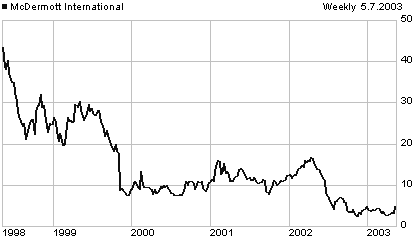 On
a May 07:
On
a May 07:  2002
The stock of oil well services and equipment company Seitel (SEI) drops
from the previous day's close of $5.65 to an intraday low of $3.12, before
partly recovering to close at $4.00. It had traded as high as $9.03 just
one session before that, on 03 May 2002, $22.72 on 12 Mar 2001,
and $25.56 on 20 Oct 1997. [< 5-year price chart]
2002
The stock of oil well services and equipment company Seitel (SEI) drops
from the previous day's close of $5.65 to an intraday low of $3.12, before
partly recovering to close at $4.00. It had traded as high as $9.03 just
one session before that, on 03 May 2002, $22.72 on 12 Mar 2001,
and $25.56 on 20 Oct 1997. [< 5-year price chart]
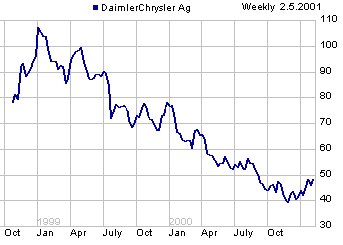 1998
1998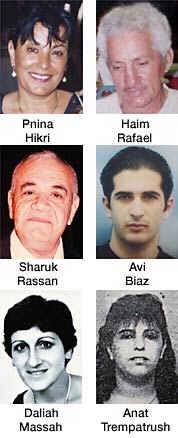
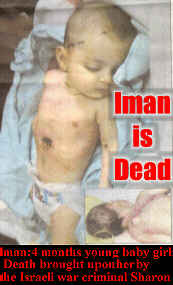
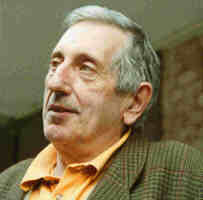 In the first week of May 2001, Turkey's parliament passed a law allowing
inmates in the small cells to take part in some collective activities. The
government has also drawn up plans to allow civilian inspection of prison
conditions. But human rights groups, including Amnesty International, say
the changes don't go far enough. Prisoners support group Ozgur Tayad has
said the fast will continue until the government meets the strikers demands
for 18-person wards and the abolition of anti-terror laws.
In the first week of May 2001, Turkey's parliament passed a law allowing
inmates in the small cells to take part in some collective activities. The
government has also drawn up plans to allow civilian inspection of prison
conditions. But human rights groups, including Amnesty International, say
the changes don't go far enough. Prisoners support group Ozgur Tayad has
said the fast will continue until the government meets the strikers demands
for 18-person wards and the abolition of anti-terror laws.
